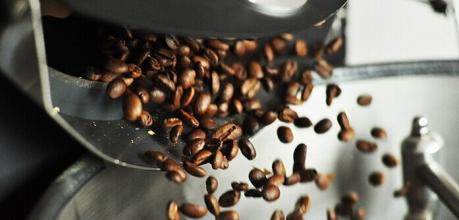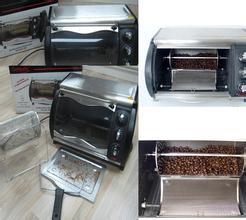Principles and principles of coffee roasting what is the principle behind roasting? How to better bake coffee
As the name suggests, roasting is to provide heat to coffee beans, causing a series of chemical changes inside. Raw coffee beans show the unique color, aroma and taste of coffee by roasting. Every coffee bean contains fragrance, sour taste, sweet taste and bitter taste. How to release it incisively and vividly depends on the heat of baking.
From the insipid raw beans to the mellow aftertaste in the cup, baking is a very important step in the long journey of every coffee bean to outline its character and nurture its fragrance. Coffee beans are about 20 minutes long (inversely proportional to the temperature) and the temperature is as high as more than 200 degrees Celsius. In the process of dialogue with hot cuts, coffee beans have undergone many chemical changes.
First of all, the starch in raw beans will be converted into sugars and acids because of high temperature, while substances such as cellulose will be carbonized to varying degrees. Water and carbon dioxide evaporate, while proteins are converted into enzymes, which combine with the rest of the fat to form an oil film on the surface of coffee beans. Coffee beans swell after roasting, giving off a primary explosion, a secondary explosion, a sound like popcorn, and loss of moisture. But because the skin on the surface of coffee beans is very tough, we usually don't see coffee beans crack like popcorn. From raw beans, light roasting, medium roasting to deep roasting, the water is released again and again, the weight is reduced, but the volume slowly expands, the color of the coffee beans deepens, the fragrant oil is gradually released, and the texture becomes crisp.
In raw beans, there is a lot of chloric acid, which gradually disappears with the baking process, releasing familiar and pleasant fruit acids such as acetic acid, citric acid and malic acid in wine. Baking moderately presents these sour flavors.
We often see that roasted coffee beans have different shades of color. On the one hand, this may be due to different types of individual coffee beans; on the other hand, the main reason for this color difference is the degree of roasting. In the most popular language, the degree of baking can be interpreted as the heat of baking. Take the most classic example of carbonated coffee, a French roasted coffee that is highly carbonized, dark brown and carbon black due to its deep roasting (either because of the high temperature during baking, or because of the long baking time, or both, depending on the situation). It is generally believed that carbonized coffee tastes bitter, which comes not only from caffeine but also from carbonized coffee beans.

The principle of baking: the most important thing in baking is to be able to stir-fry the inside and outside of the beans evenly. First of all, the moisture in the beans will be discharged smoothly through firepower. If this step is too hasty, it will be spotted, and the taste will be astringent and choking.
80% of the taste of coffee depends on roasting, so roasting is an important process for brewing good coffee.
If the baking technology is good, the beans will be large and swollen, with no wrinkles and luster. Roasting coffee beans into their ultimate characteristics is the ultimate goal of baking.
The article comes from Wen Honggang's Weibo.
Important Notice :
前街咖啡 FrontStreet Coffee has moved to new addredd:
FrontStreet Coffee Address: 315,Donghua East Road,GuangZhou
Tel:020 38364473
- Prev

How to bake coffee beans in the oven at home? Introduction to roasting at home-roasting coffee and raw beans in the oven
The hardest part of roasting coffee beans and coffee-related activities at home is baking coffee beans at home. When making high-quality coffee, whether the beans are fresh or not is very important. The easiest way is to bake coffee beans in the oven. The biggest advantage of this is that it adjusts the temperature so that the smell of roasted coffee does not pervade your home. Heat the oven to 230 degrees in advance. Remember to
- Next

The roasting degree determines the coffee taste, the flavor reflects the roasting degree and the characteristic roasting degree.
Baking degree and characteristics from the baking degree, the deeper the baking degree, the stronger the bitter taste; the shallower the baking degree, the stronger the sour taste. The choice of baking degree depends on the characteristics of the coffee bean itself. for coffee beans with strong bitterness and light sour taste, they generally choose a moderate and shallow roasting degree. 1. Shallow baking (Light) is the lightest fried culture, no fragrance and concentration.
Related
- What is the meaning of lactic acid fermentation with coffee bean treatment?
- How to judge the state of foam by sound?
- How does the latte pull out the unicorn pattern? Come to get for a little trick to improve the flower pull!
- Will flower pulling affect the taste of the latte?
- Do you know the history of coffee?
- The difference between honey treatment and sun washing what is raisin honey treatment?
- What kind of milk can a novice use to make coffee foam to keep the foam longer? The correct method and skills of milking tutorial sharing
- Why do washed coffee beans taste sour? Flavor characteristics of washed Coffee
- Introduction to the skill of how to practice the size and height of water injection around the circle of hand-brewed coffee
- How do beginners practice coffee flower drawing from scratch?

